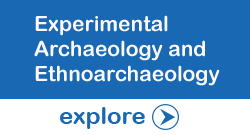Pleistocene Fauna:Speakers
Bones & Beyond: Introduction to South Asian Pleistocene Fauna
Return to home page of Down Ancient Trails Return to Bones & Beyond Home Page
January 4-9th, 2021 A lecture series organised jointly through the Down Ancient Trails forum in collaboration with Professor Vijay Sathe, former professor, Deccan College Postgraduate and Research Institute, Pune, India.
This page is currently being updated.
About Our Speakers
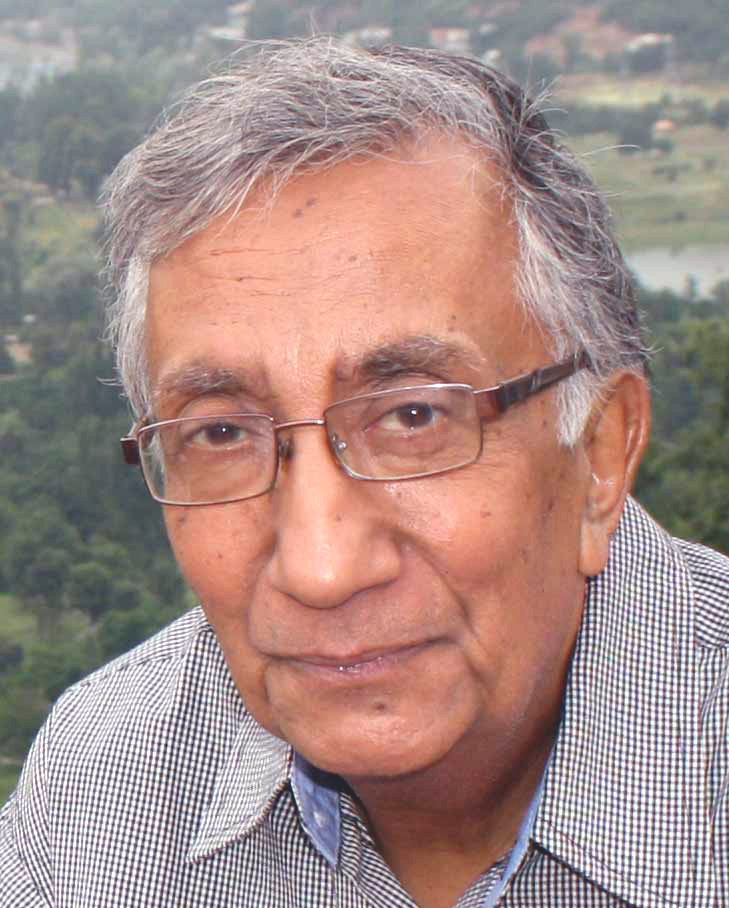 4th January 2021: 6.45-7.25 pm (IST): Prof. Ashok Sahni: Professor Emeritus, Panjab University, Chandigarh, India ,Topic: The New Palaeontology: Extracting Information
4th January 2021: 6.45-7.25 pm (IST): Prof. Ashok Sahni: Professor Emeritus, Panjab University, Chandigarh, India ,Topic: The New Palaeontology: Extracting Information
Abstract: The techniques and tools for studying prehistoric life whether at 1ka and 10 ma are basically the same. In any multidimensional approach irrespective of the target of study, emphasis must be laid in extracting the maximum information available. In the present digital age, there are many options and my talk centers around these traditional and modern methods. The primary information about depositional environment and climate must come as far as possible from the sedimentary sequences in which the fossil occurs. Of course, the fossil provides important information by itself. For this several techniques are available, many now in the country, which need to be utilized. Some of these include levels of observation of the object being investigated; techniques of collection, digital X Rays, confocal laser scanning microscopy, micro CT scanning and several others.
About: Professor Ashok Sahni is currently Professor Emeritus, Panjab University, Chandigarh. He obtained his Ph.D. in Geology from the University of Minnesota, Minneapolis, USA in 1968 and returned to India to work in the Universities of Lucknow and Chandigarh. He is a Fellow/Associate of several prestigious Scientific Academies and Societies including the Third World Academy at Trieste, Italy; Humboldt Foundation, Germany; Associate Etranger Geol. Soc. France, (Paris); Hon. MSVP, USA, and also a Fellow of all the Indian Science Academies. He has been associated with several UNESCO-IGCP projects as National and International Leader. He has worked at the American Museum Natural History, New York; National Museum Natural History, Washington D.C., and taught as a visiting Professor at Bonn University, Germany. He has eleven articles in Science and Nature journals (1979-2014). Currently he is consultant to the Evolution Park and Gallery at Science City, Kapurthala and established the Dinosaur of India Gallery at Sector 10 Chandigarh Museum. He is a recipient of the INSA D N Wadia Medal (2009) for his contributions to Earth Sciences. In 2011, he was awarded the prestigious Lifetime Achievement National Geoscience Award (2009) by the Ministry of Mines, Government of India. In 2014, the Electron Microscope Society of India conferred upon him a Life Time Achievement award. More recently (2020), he was awarded the Life Time Excellence award by the Ministry of Earth Sciences. He has over 8000 citations of his research work.
 4th January 2021: 7.30-8.10 pm (IST): Dr. Vivesh Kapur: Birbal Sahni Institute of Palaeosciences, Lucknow, Uttar Pradesh, India, Topic: Vertebrate (mammalian) records from the Neogene (Miocene) of the Kutch Basin, Gujarat State, Western India: palaeobiogeographic and allied aspects.
4th January 2021: 7.30-8.10 pm (IST): Dr. Vivesh Kapur: Birbal Sahni Institute of Palaeosciences, Lucknow, Uttar Pradesh, India, Topic: Vertebrate (mammalian) records from the Neogene (Miocene) of the Kutch Basin, Gujarat State, Western India: palaeobiogeographic and allied aspects.
Abstract: Neogene (Miocene) vertebrates from the sedimentary sequences of the Kutch Basin (Gujarat State, western India) are known since the late nineteenth century with occasional occurrences of fossil mammals recorded in the latter half of the twentieth century. Nonetheless, past decade or more has witnessed a renewed effort in vertebrate palaeontological research in the Neogene (Miocene) interval of the Kutch Basin. These concerted endeavours have yielded numerous records on fishes (sharks, rays), snakes, chelonians, and birds. Recently, micron-sized ichnofossils (coprolites) linked to ichthyophagous fishes were also recorded from the Miocene (Aquitanian) of Kutch Basin, western India. Additionally, plethora of mammals that include rodents, chiropterans, proboscideans, artiodactyls, perissodactyls and a hominoid have been recorded from the Miocene interval of the Kutch region, western India and hint at the mammal-yielding potential of the region. The mammalian fauna from the Miocene interval of Kutch is quite significant in understanding any change(s) in the habitat [linked to change(s) in the climate] and in developing our understanding on the dynamics of dispersal(s) between Africa, Europe and the Indian subcontinent that have been generally linked to sea-level fluctuations during the Miocene.
Read more about the speaker here
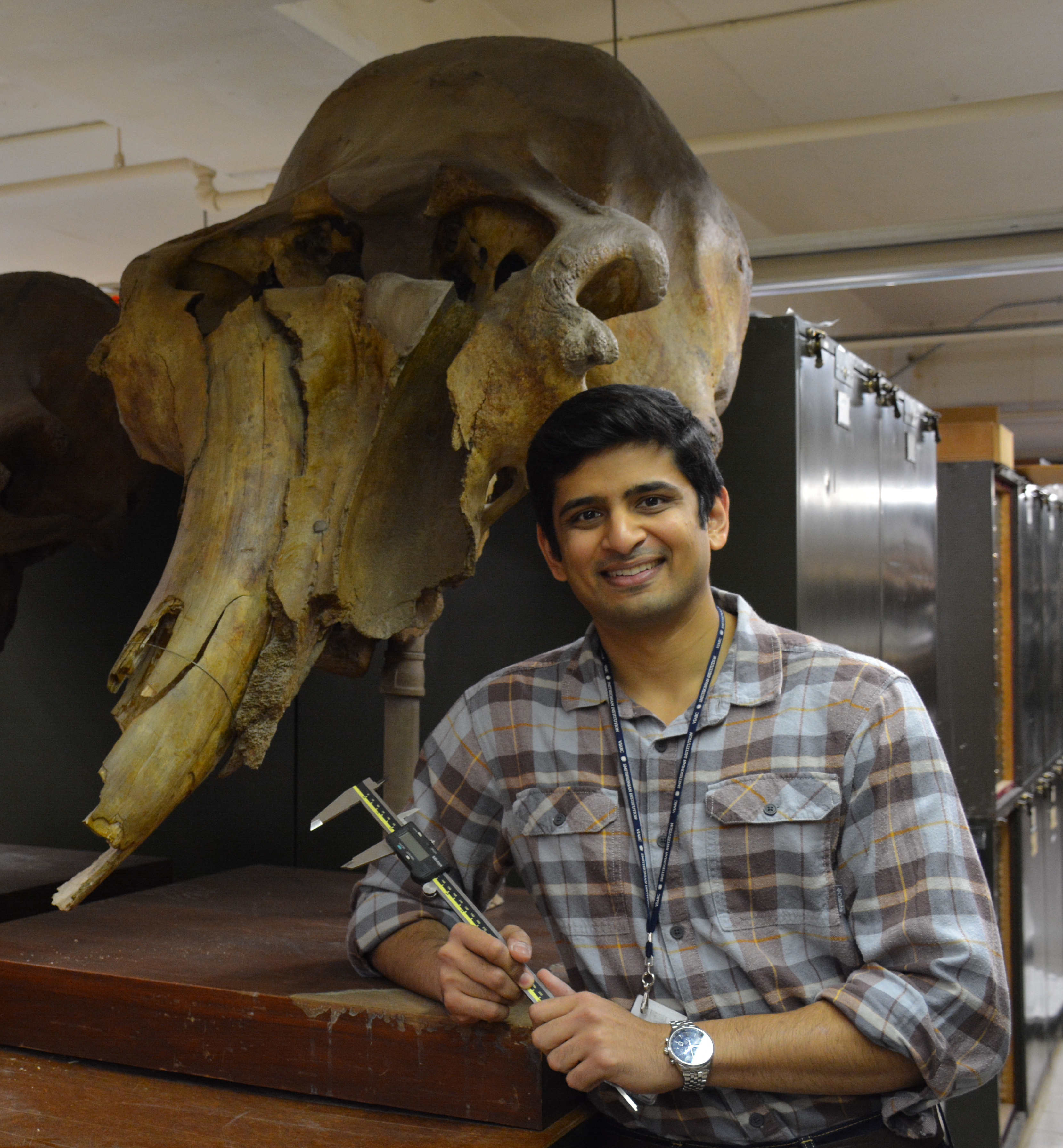 5th January 2021: 6.35-7.15 pm (IST): Dr. Advait Jukar: Gaylord Donnelley Postdoctoral Associate at Yale Institute for Biospheric Studies and Department of Anthropology, Yale University, New Haven, CT and Research Associate at Department of Paleobiology, National Museum of Natural History, Smithsonian Institution, Washington, D.C.,
5th January 2021: 6.35-7.15 pm (IST): Dr. Advait Jukar: Gaylord Donnelley Postdoctoral Associate at Yale Institute for Biospheric Studies and Department of Anthropology, Yale University, New Haven, CT and Research Associate at Department of Paleobiology, National Museum of Natural History, Smithsonian Institution, Washington, D.C.,
Topic: The assembly of South Asia's mammalian fauna
Abstract:
Large mammal communities in South Asia today are some of the only ones around the planet which include several large species like elephants, rhinos, buffalo, and tiger. It includes lineages that originated in Africa, and both northern and eastern parts of Eurasia. Why do Indian mammalian communities look the way they do? Through an in-depth analysis of the fossil record from the last 4 million years, I will explore how various processes such as immigration, extinction, and evolution have underpinned the assembly of South Asia’s mammalian fauna. Read more about the speaker here
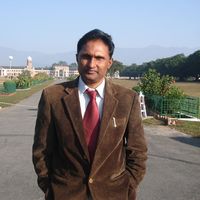 5th January 2021: 7.20-8.00 pm (IST): Prof. Rajeev Patnaik: Professor Geology, Panjab University, Chandigarh, India, Topic: Diet and Ecology of Neogene and Quaternary mammals of India
5th January 2021: 7.20-8.00 pm (IST): Prof. Rajeev Patnaik: Professor Geology, Panjab University, Chandigarh, India, Topic: Diet and Ecology of Neogene and Quaternary mammals of India
Abstract: Stable carbon and oxygen isotope, dental micro-mesowear and hypsodonty index based studies of fossil mammalian teeth offer an excellent insight into their past diet and ecology. The carbon isotope composition (δ13C) of tooth enamel in modern herbivores distinguishes between diets dominated by C3 plants (dicots including trees, shrubs, herbs, forbs) and cool season (high latitude or altitude) grasses or sedges, and those dominated by C4 plants (mostly monocots, such as warm season grasses and sedges). Mixed-feeding comprises a mixture of C3 and C4 plants. δ18O values on the other hand depend on the body water of the herbivores which in turn is obtained from surface water and food. Dental microwear patterns characterised by the percentage of pits and striations, length and width of these striations and pits help in the interpretation the diet of ancient mammals and therefore facilitate the reconstruction of past diet and habitat. Low crowned sharp teeth are indicative of soft food intake such as leaves and fruits, whereas high crowned blunt teeth points to a diet of abrasive foods like roots, seeds and grass. Our studies (stable isotopic composition, micro-mesowear and hypsodonty indices) on fossil mammals from Neogene and Quaternary deposits of the Siwaliks, Karewas, Kutch and Narmada Valley reveal that Middle and Late Miocene hypsodont mammals (ex. proboscideans, giraffids, bovids, suids and hominoids) were predominantly browsers. This changed in the Pliocene and Pleistocene when the fauna was dominated by hypsodont elephants, equuids, bovids, hippos and few monkeys which preferred grazing on grass.This dietary shift among the herbivores of the subcontinent was likely influenced by the shift in the ecology and climate.
About: Dr. Rajeev Patnaik has contributed towards the understanding of evolution of some Indian fossil mammals and their palaeoecology including geological context of primate/human evolution, and the impact of climate change on evolution. Over the years he has adopted a multidisciplinary approach (stable isotopes, dental microwear, microstructure, cladistics etc.) to address issues concerning Neogene-Quaternary climatic conditions, mammalian ecology, diet, biogeography, chronology and evolution. He established a rodent based biostratigraphy of Siwaliks and contributed significantly towards understanding the evolution of murine rodents to reconstruct palaeomonsoonal conditions. He was involved in the cladistic analyses of the Narmada cranium, the only hominin found from India till date, showing closer relationship with the European Steinheim specimen. Using various dating methods, he found that the famous hominin fossil from Narmada was reworked. In the Kurnool Cave deposits he and his colleague found that the disappearance of several vertebrate taxa was probably due to a very arid phase of the Last Glacial Maxima (LGM). He and his colleagues discovered new hominoids/primates, ostrich-like eggshells, new pelican and darter fossils from the Siwaliks; Late Cretaceous rice from central India; and Miocene mammals from the Baripada Beds of Odisha. He has done field and lab work in Egypt, USA, Germany, France, Australia and Japan. In 2016 he was awarded the prestigious National Geoscience Award by the Honourable President of India and in 2019 was elected a fellow of the Indian Academy of Sciences.
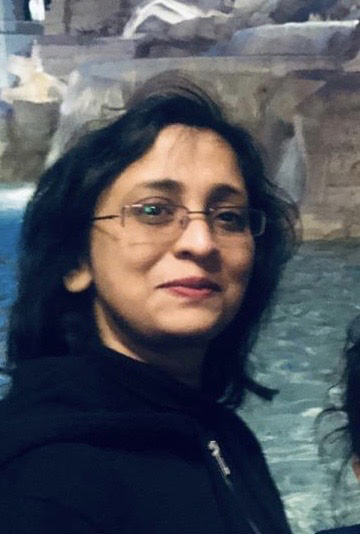 6th January 2021: 6.35-7.15 pm (IST): Dr. Varsha Kelkar Mane: Assistant professor, University Department of Biotechnology, University of Mumbai, Mumbai, India
6th January 2021: 6.35-7.15 pm (IST): Dr. Varsha Kelkar Mane: Assistant professor, University Department of Biotechnology, University of Mumbai, Mumbai, India
Topic: The Biochemistry of Fossilization
Abstract: The story of our existence and so also our end has been and will be written in the fossils. Pondering over the pages of fossils as left in time, can reveal answers to how, when and where life came into being on this beautiful planet, it could also help us unravel, if there could be possibility of life on other planets like Mars for example.
On a mega scale the geological landscape of the earth was transformed through the eras, mountains fell, oceans dried, continents rifted, but besides these changes there were numerous microscopic creatures at work, making our planet ever so more habitable. Microorganisms have been an integral part of our existence; they work for us whilst we are alive and drive us back to our inorganic origins. The complex biogeochemical cycles have not only been critical to the existence of life, but also in transforming energy and matter into more usable forms to support the ecosystems. These cycles enable the movement of matter from the living to the non-living
Fossilization, a complex process is dictated by not only the type of animal being worked upon by multiple forces but also the physico-chemical conditions at that time as well as after the death and / burial of the animal. We unravel an interesting account of the association and variety of microflora on surfaces of multiple of fossilized specimens collected from diverse environments, and try to decipher the contribution of these microscopic organisms in the creation as well as the preservation of fossils
About: Varsha Kelkar Mane has 16+ years’ of experience in Academia, Teaching, Research / Research Management, Student Mentoring in positions of continually increasing responsibility. She has demonstrated Technical Leadership and in Coordination and Project Management of multi-million-dollar national as well as international projects. Her expertise lies in areas of Environment and Biotechnology, with emphasis on diagnostics and therapeutics, paleontology & archival preservation, bioprospecting and bio-valorization.
She has mentored several students at UG and PG level and has to her credit seven PhD scholars in Biotechnology. She has represented the University of Mumbai in multiple international collaborations and associations. She has been a reviewer for various national as well as international journals like Scientific Reports, Nature, PlosOne, Wetlands, RSC Chemical Biology, and Current Science etc.
She has recently earned the prestigious title FRSC from the Royal society of chemists, England
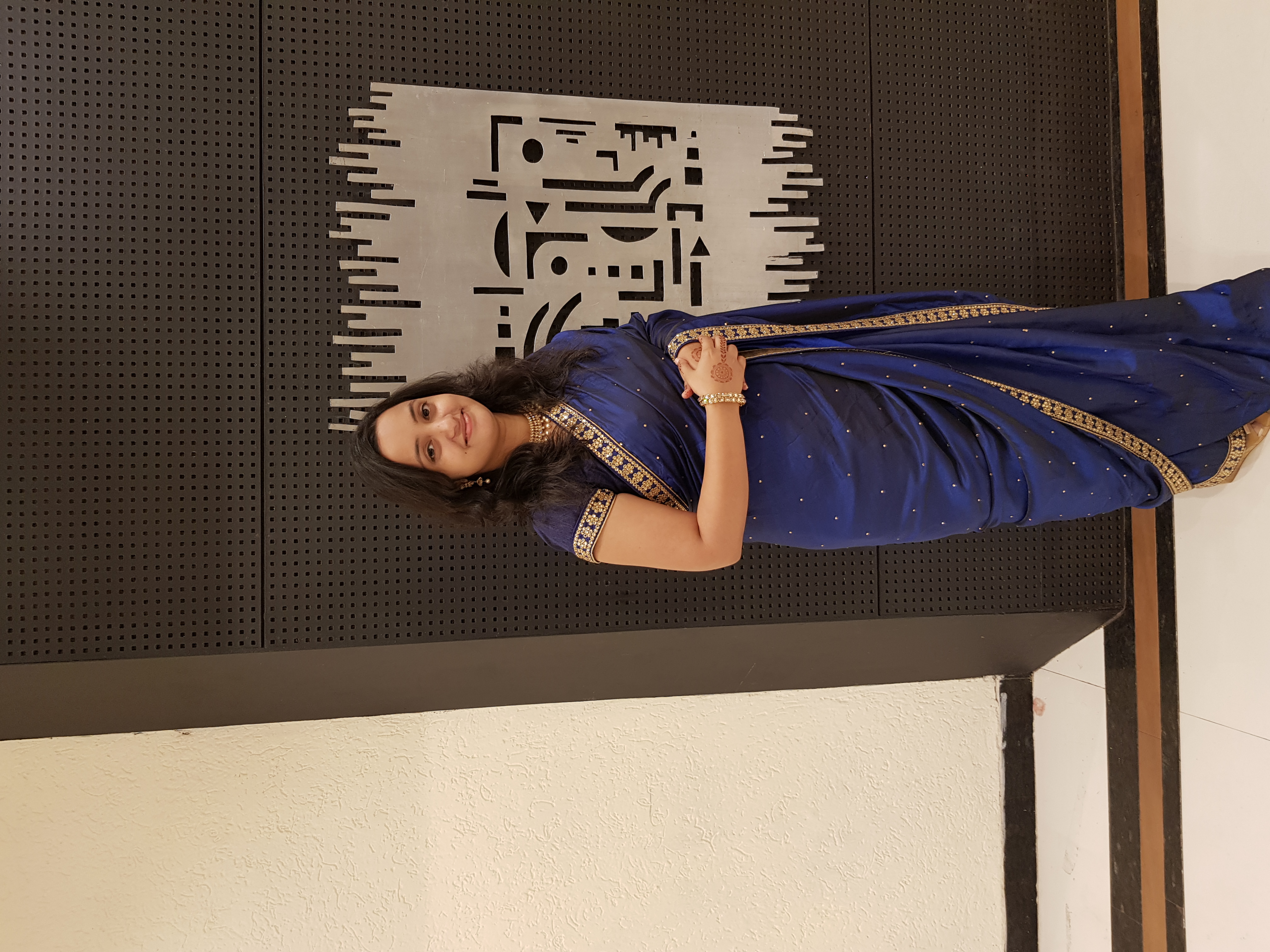 6th January 2021: 7.20-8.00 pm (IST): Miss. Falguni Katkar: Assistant Archaeologist at Archaeological Survey of India, Mumbai Circle and Research Fellow at Deccan College Post graduate and Research Institute, Pune, Maharashtra, India
6th January 2021: 7.20-8.00 pm (IST): Miss. Falguni Katkar: Assistant Archaeologist at Archaeological Survey of India, Mumbai Circle and Research Fellow at Deccan College Post graduate and Research Institute, Pune, Maharashtra, India
Topic: Role of Microbes in Fossil formation Process: an experimental case study
Abstract: Survival of bones in the archaeozoological deposit and change in their histology is primarily dependent on the pre and post burial conditions. The process of diagenesis takes place through chemical more-so biochemical deterioration of collagen; the organic phase, hydroxyapatite; the mineral phase, as well as on the composite of both these phases. Physical factors like temperature, pH, and active hydrology govern the process of diagenesis. This study focuses on the microbial alterations on mammalian bones from the proto historic site 4MSR- Binjor in Rajasthan, India. Site is dated to approximately 3200 B.C. Bones of large mammals, fish and reptiles have been abundantly found in habitation area.
A comparative study of sections of archaeological samples with those of fresh bones incubated with microbial cultures could shed light on the process of bone penetration and exploitation of organic contents of bone tissue. Fresh bones of chicken, goat and kingfish were exposed to pure cultures of organisms commonly found in soil and related environment. Organisms inherent with the bone, along with these one would start scavenging the nutrients from the bone upon consumption of organic nutrients from supporting media, thus changing its physical appearance. Microscopic fractures, change in porosity, pigmentation of surface could then serve as indicators of microbial interactions and could be used for visual identification in archaeozoological deposits.
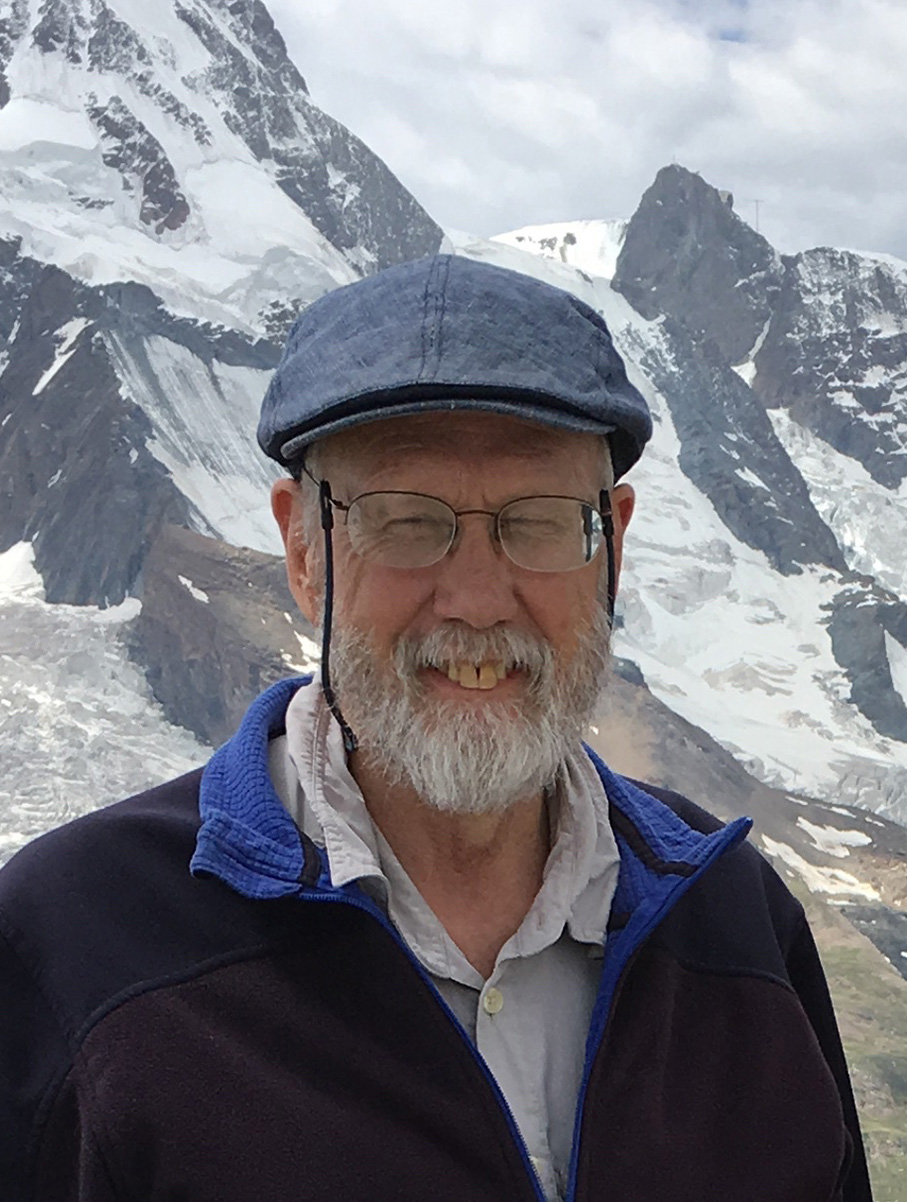 7th January 2021: 6.35-7.15 pm (IST): Prof. Thure Edward Cerling: Distinguished Professor, Dept. of Geology and Geophysics, University of Utah; Distinguished Professor, Dept. of Biology, University of Utah and Francis H Brown Presidential Chair, University of Utah
7th January 2021: 6.35-7.15 pm (IST): Prof. Thure Edward Cerling: Distinguished Professor, Dept. of Geology and Geophysics, University of Utah; Distinguished Professor, Dept. of Biology, University of Utah and Francis H Brown Presidential Chair, University of Utah
Topic: The C3-C4 transition: opportunities and challenges for paleontology
Abstract:being updated
Read more about the speaker here
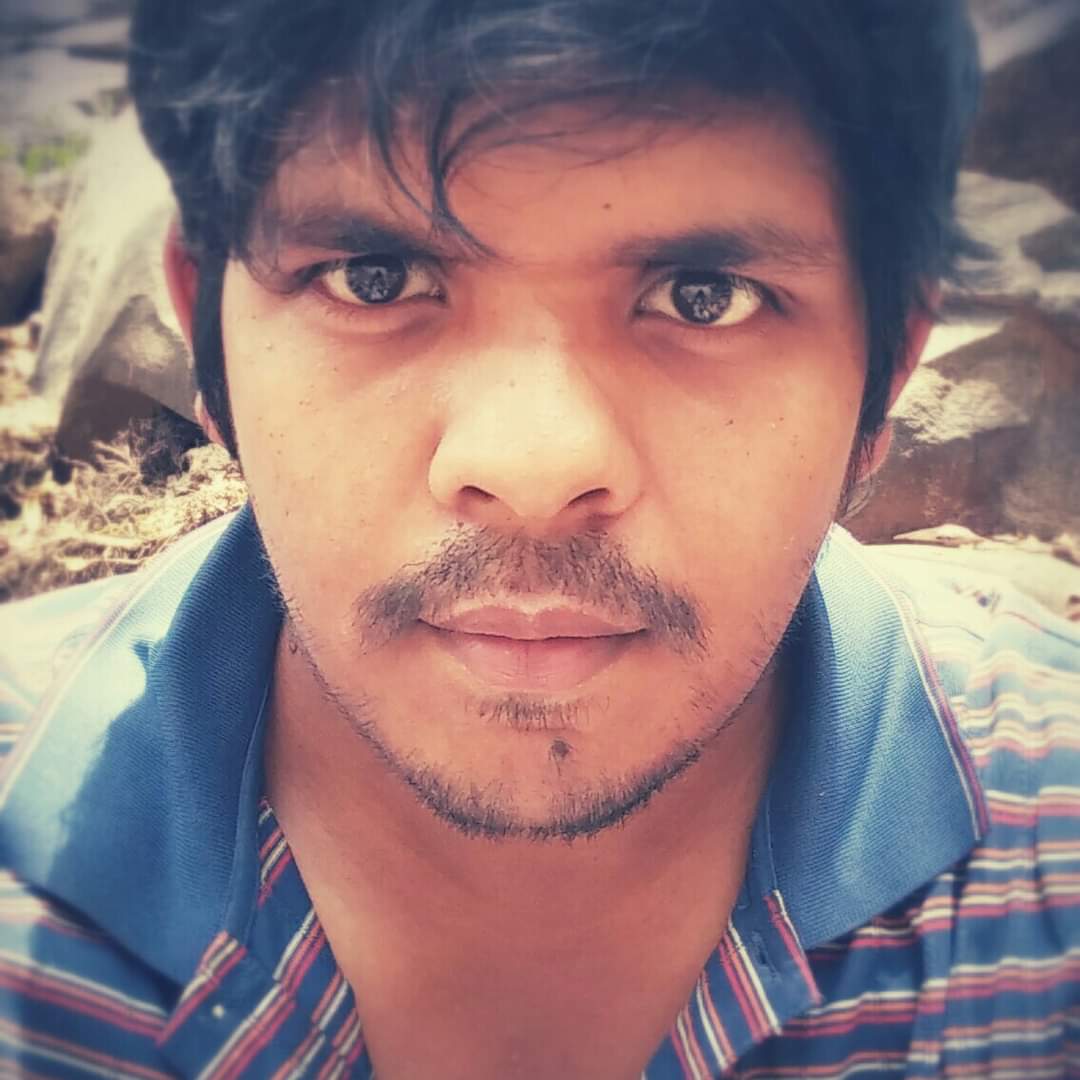
7th January 2021: 7.20-8.00 pm (IST): Dr. Prateek Chakraborty: Research Associate at Deccan College Post graduate and Research Institute, Pune, Maharashtra, India
Topic: Bone histology in Faunal Analysis: An Overview
Organising Committee Member
Abstract: The application of Bone histology to faunal material is an interesting direction for analysis that may help immensely in reconstructing environmental and behavioural phenomena in past taxa. While it has hitherto been used extensively in the identification of taxa, to distinguish between both human and animal bones, as well as between closely related taxa, there is also a great deal of potential in the utilisation of bone histology in understanding and interpreting biological adaptation. By correlating histological features and aberrations with specific environmental and even cultural phenomena, it becomes possible to glimpse new aspects of biological adaptation in fauna, often parallel to those occurring today in extant fauna. In other words, bone histology allows the analysis of environmental and adaptational stresses at the microscopic level, which manifest as distinct histological features. The present talk provides an overview of the application of bone histology in this manner, with case studies from palaeontological and archaeozoological material.
About: Prateek Chakraborty has completed his M.A. and Ph.D in Ancient Indian History, Culture and Archaeology from Deccan College PGRI, Pune. Presently, he holds the post of Scientific Assistant in the Palaeontology Laboratory, and specialises in the invasive microstructural study of large vertebrate fauna from the Late Quaternary period. Apart from contributing to the faunal analysis of various sites in the Indian subcontinent, he has also worked on experimental studies on the deterioration of large vertebrates in both controlled and natural environments and the microscopic aspects of taphonomic change. More recently, he has focused on the histological and microstructural study of large vertebrates from both Archaeozoological and Palaeontological assemblages. His work has been published in various journals such as Anatomy and Biological Anthropology and Integrative Zoology, and presented at conferences and symposia within and outside India. He has also been involved in the organisation of academic sessions within the same. He has also been part of various public outreach and education events intended to introduce the public to Archaeology and Palaeontology. These have been conducted by Deccan College PGRI, Symbiosis School Pune, Sharma Centre for Heritage Studies, Chennai, The Center for Extramural Studies, University of Mumbai, Sprouts Trust Mumbai, and the Indian Science Congress.
Abstract for Outreach Talk for Children and Teachers
Topic: An introduction to new laboratory methods in Palaeontology
Palaeontology in the 21st Century offers a wide range of techniques through which the remains of past life can be analysed and understood. There are many steps between the recovery of a specimen from the field and the reconstruction of the environment it lived in, which includes analysis through several different laboratory techniques, ranging from simple morphological analysis to far more technique and instrument-intensive methods that allow minute examinations of the conditions in which ancient life forms existed. In this outreach lecture, we will be briefly looking at laboratory techniques commonly used in Palaeontology today, and how they benefit scientists attempting to reconstruct a complete picture of our natural history.
Outreach for Children: All about Fossils (with Professor Vijay Sathe)
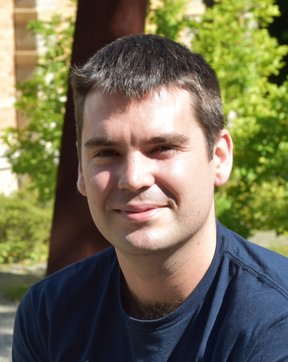 8th January 2021: 6.35-7.15 pm (IST): Dr. Patrick Roberts: W2 Research Group Leader, Department of Archaeology, Max Planck Institute for the Science of Human History, Jena, Germany. Topic: Pleistocene mammal extinctions and non-extinctions in South Asia and their relationship to Homo sapiens
8th January 2021: 6.35-7.15 pm (IST): Dr. Patrick Roberts: W2 Research Group Leader, Department of Archaeology, Max Planck Institute for the Science of Human History, Jena, Germany. Topic: Pleistocene mammal extinctions and non-extinctions in South Asia and their relationship to Homo sapiens
Abstract: South Asia has been relatively neglected in the context of the Late Pleistocene extinction of Quaternary vertebrates. This is despite the fact that the region has potentially early dates for the arrival of our species in a variety of different environments, from the Thar Desert to tropical Sri Lanka, and sits at the centre of climatic influences from the Indian Ocean Monsoon system whose operation varied across the course of the Pleistocene. Here, I evaluate evidence for the extinction and persistence of different mammalian taxa during the Quaternary of the Indian subcontinent, focusing on the Billasurgam Caves of southern India and the Wet Zone rock shelter and cave sites of Sri Lanka. These sites, and their broader context, demonstrate the persistence of many large- and medium-sized mammal species that have traditionally considered vulnerable to hunting or climatic changes, in South Asia from 125,000 years ago to the present. In the case of Sri Lanka, a number of taxa, particularly primates, also appear to have been intensively exploited by human societies from as early as 45,000 years ago, but nevertheless persist on the island today. I argue that the data from southern India and Sri Lanka highlights the role of mosaic habitats and detailed human ecological knowledge in the persistence of mammalian fauna in South Asia in the past, though much more multidisciplinary work, supported by renewed chronological dating efforts, remains to be done.
About: Dr. Patrick Roberts is the W2 Research Group Leader at the internationally renowned Max Planck Institute for the Science of Human History, Jena, Germany. Here, he created and runs the Stable Isotope Laboratory for the Department of Archaeology, applying chemical techniques to fossil humans, animals, and sediments to answer questions about past diets and ecological adaptations, particularly during the evolution and dispersal of our species, Homo sapiens. For most of the last decade he has led major research programmes that explore past human occupation and alteration of tropical forests, environments once considered to be unattractive for past human societies, and has published the first global review of 'Tropical Forests in Prehistory, History, and Modernity' with Oxford University Press. He has sat on UNESCO panels that bring together archaeology, anthropology, conservation scientists, and modern stakeholders in the development of sustainable approaches to the management and use of tropical forests on a global scale. He currently holds a prestigious ERC Starter Grant for his 'PANTROPOCENE' project and is a Senior Research Fellow at the University of Queensland, Australia.
 8th January 2021: 7.20-8.00 pm (IST): Dr. Noel Amano: Department of Archaeology, Max Planck Institute for the Science of Human History, Jena, Germany. Topic: In Times of Change: Late Pleistocene Paleoenvironment and Subsistence Strategies in Eastern Java, Indonesia
8th January 2021: 7.20-8.00 pm (IST): Dr. Noel Amano: Department of Archaeology, Max Planck Institute for the Science of Human History, Jena, Germany. Topic: In Times of Change: Late Pleistocene Paleoenvironment and Subsistence Strategies in Eastern Java, Indonesia
Abstract: The transition from the Late Pleistocene to the Holocene, which was accompanied by significant climatic fluctuations and drastic sea level changes, is a suitable period to study the relationships between environmental changes and human behavioural adaptations. Perhaps one of the most dramatic landscape changes during the period was the inundation of the Sunda Shelf which resulted in the modern configuration of Island Southeast Asia (ISEA). Zooarcheological investigations in the region have provided information on how ancient foraging communities responded to these changes. However the complete picture remains to be elucidated. In this talk, I present the results of analyses of faunal remains from three sites in East Java: Song Terus, Goa Braholo and Song Gupuh. The results, coupled with paleoenvironmental proxies including stable isotopes and dental wear, provide unique insights on subsistence strategies of prehistoric foraging communities and the environment they encountered in East Java during a key period in human history.
About: Check this link: https://www.shh.mpg.de/person/53942/2375
9th Janu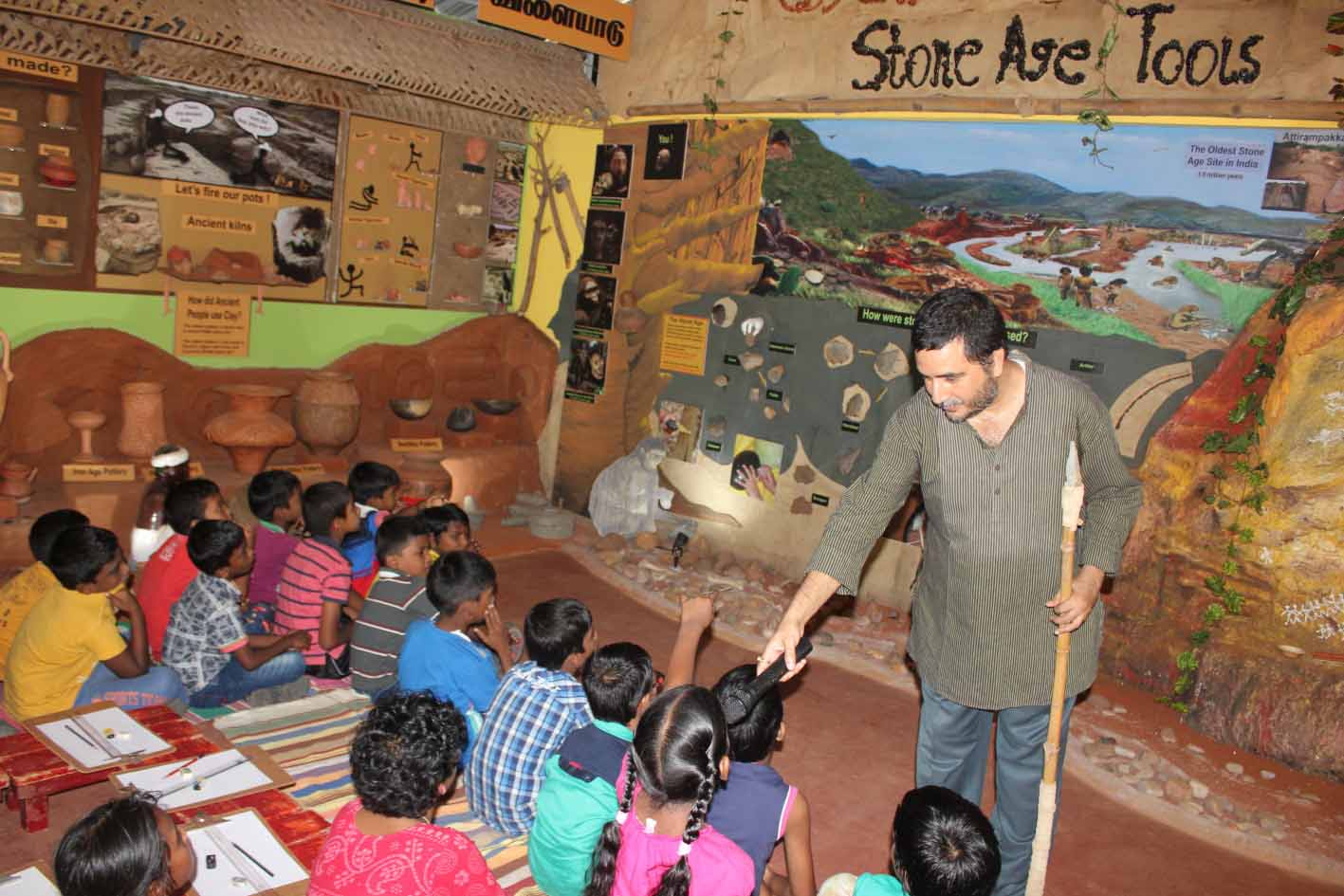 ary 2021: 6.30-6.45 pm (IST): Prof. Shanti Pappu & Dr. Kumar Akhilesh, Sharma Centre for Heritage Education, India: Bringing stones and bones alive: Outreach for children and teachers
ary 2021: 6.30-6.45 pm (IST): Prof. Shanti Pappu & Dr. Kumar Akhilesh, Sharma Centre for Heritage Education, India: Bringing stones and bones alive: Outreach for children and teachers
Organising Committee Members
Abstract: Here, we discuss appraoches towards public outreach in the fields of archaeology & related Quatenary sciences in India. We focus specifically on children and discuss methods that we have developed and are currently refining as part of the activities of the Sharma Centre for Heritage Education, India. We discuss here approaches used in outreach related to Palaeolithic archaeology and fossil fauna and flora, and provide examples from workshops conducted at the centre, and in collaboration with experts (Deccan College Post graduate and Research Institute, Pune, , French Institute, Pondicherry, Agharkar Research Institute, Pune). We also discuss here our attempts at public outreach in both rural and urban areas, and in India and abroad. Owing to the COVID-19 crisis, we discuss approaches that we are taking to move our programs online and issues faced in the same.
About: Read more about us here and our publications on this website!
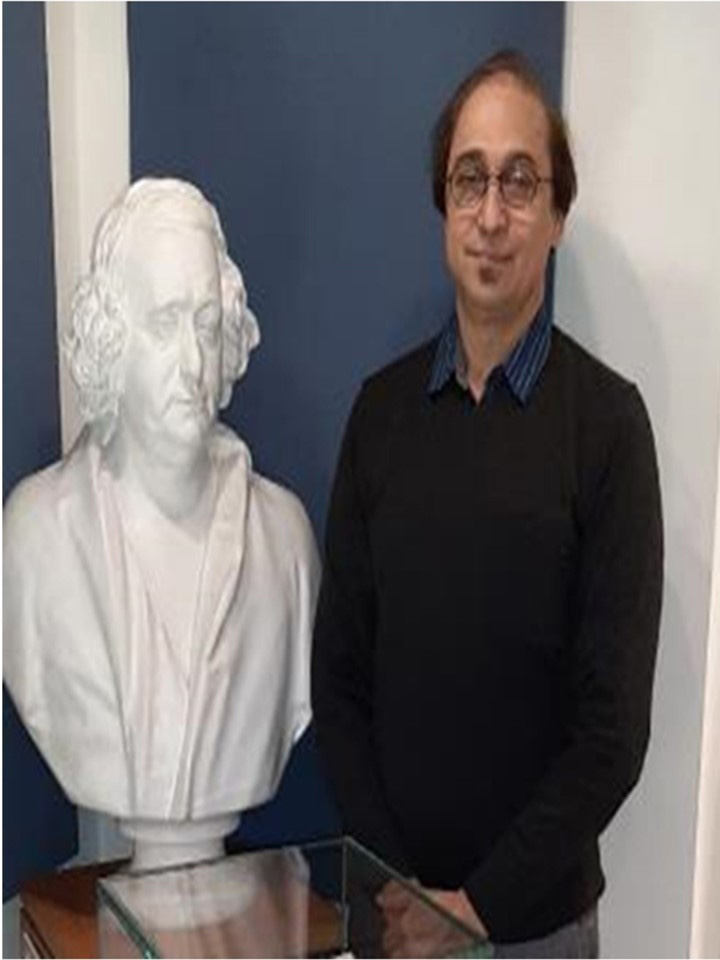 9th January 2021: 7.00-7.40 pm (IST): Prof. Vijay Sathe: Professor at Deccan College Postgraduate and Research Institute, Pune, Maharashtra, India. Topic: Taphonomy of Pleistocene fossil vertebrates from Peninsular India.
9th January 2021: 7.00-7.40 pm (IST): Prof. Vijay Sathe: Professor at Deccan College Postgraduate and Research Institute, Pune, Maharashtra, India. Topic: Taphonomy of Pleistocene fossil vertebrates from Peninsular India.
Abstract: The ‘life history of a fossil’ is a long story of journey of bones from ‘biosphere to lithosphere’, pivotal in understanding the faunal history through time and space. ‘Taphonomy’ or the ‘Laws of Burial’, as formally coined by I.A. Efremov eighty years ago, has enabled better understanding of interactive dynamics between bones and the sediments that have provided the former a prolonged residence for preservation and fossilisation. There are close to thousand vertebrate fossil-bearing sites spread across Peninsular India in the context of river valleys whose investigations are beginning to reveal the geographical and temporal coordinates of the actual source of life and death assemblages which contributed to the formation of fossil record.
The presentation will offer the comprehensive view of taphonomic investigations over the last four decades while presenting a few case studies in different geographical and geological settings as diverse as fluvial, non-fluvial and cave deposits. Mention must be made here of the sites like Amonda (Narmada valley), Harwadi (Manjra valley), Hunsgi-Baichbal valleys and Kurnool caves whose assemblage when seen through the lens of multipronged interdisciplinary approaches, begun to reveal with far greater resolution the role of biological and non-biological means of modifications that led to the information loss in the fossil record.
About: Professor Vijay Sathe is a Vertebrate Palaeontologist and former professor at the Department of AIHC and Archaeology, Deccan College Pune. He is actively engaged in Research for more than three decades in the field of Palaeontology, Palaeobiochemistry and prehistoric archaeology and has made some significant discoveries, including the large mammalian fossil sites Manjra river valley, which stand out as a type-site of vertebrate taphonomy in India. He has extensively explored and excavated in Narmada valley (M.P. and Gujarat), Manjra, Ghod and Godavari valleys (Maharashtra), and Kurnool Caves (A.P.) and examined the fossilised large mammalian remains collected from these areas. The subject of animal motifs in rock art and microvertebrates (rats and mice) in archaeozoology also constitute a significant segment of his research. In addition to this, he has specialised in the science of palaeohistology of large vertebrates, and their interrelation with environmental and dietary change. He has also studied animal remains from Harappan, Deccan Chalcolithic, Neolithic-Chalcolithic sites of Bihar and West Bengal. Animals in myths and Art History are yet major foci of research, which he has examined with special reference to physiognomy, myths and meaning of animals in ancient art and animals in art as an important piece of faunal evidence, besides bones in archaeozoological studies. He has been awarded the Dr. A.P Khatri Award for significant contributions in the field of Indian Archaeology. Professor Sathe’s work has been extensively published in numerous journals both in India and abroad, and has been presented at over 60 national and international platforms such as the International Council for Archaeozoology and the International Symposium on Palaeohistology. He has also visited South Korea and Italy as visiting professor and holds posts in various academic bodies across the globe.
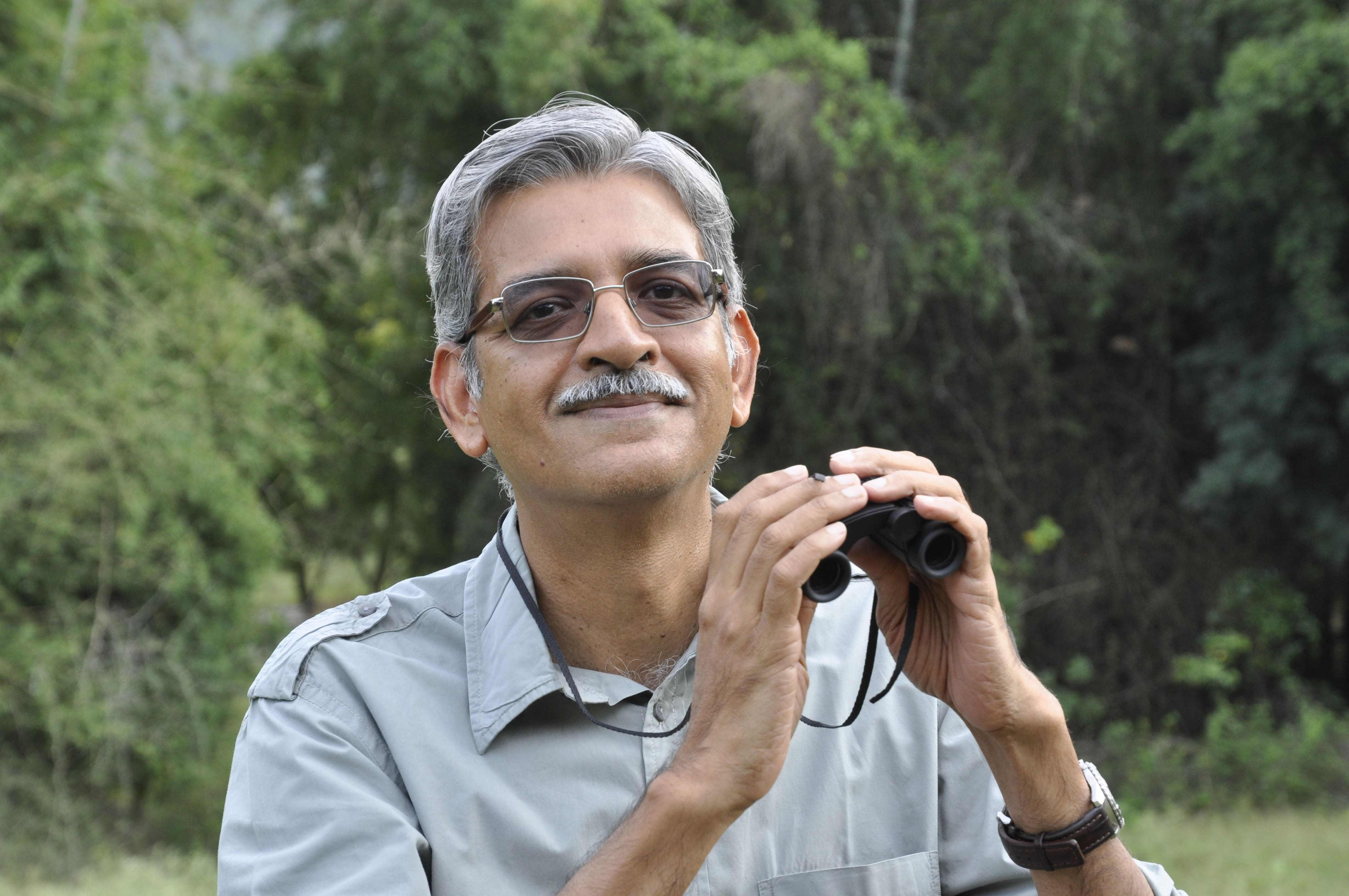 9th January 2021: 7.40-8.30 pm (IST): Prof. Raman Sukumar, Honorary Professor at Centre for Ecological Sciences; Indian Institute of Science, Bangalore, India. : Valedictory Lecture: Topic: Is Elephas maximus a grazer or a browser: evolutionary and contemporary perspectives
9th January 2021: 7.40-8.30 pm (IST): Prof. Raman Sukumar, Honorary Professor at Centre for Ecological Sciences; Indian Institute of Science, Bangalore, India. : Valedictory Lecture: Topic: Is Elephas maximus a grazer or a browser: evolutionary and contemporary perspectives
Abstract: The diet of large herbivorous mammals is of considerable interest from an evolutionary perspective as well as the contemporary perspective of conservation of endangered animals. The evolution of dental characters in the two extant genera of the family Elephantidae suggest that Elephas is adapted to a grazing diet to a significantly greater extent than is Loxodonta. Field observational studies on elephant feeding as well as dietary inferences based on stable carbon isotope analyses, however, reveal not only a wide spectrum in dietary choice but also much similarity in the realized diets of the two genera. I shall review the Plio-Pleistocene evolutionary history of Elephas in the context of natural climate and vegetation change, as well as the consequences of human-induced alteration of the vegetation during the Holocene resulting in the present-day distributional and feeding patterns of the elephant which also comes into conflicts with people in predominantly agricultural landscapes.
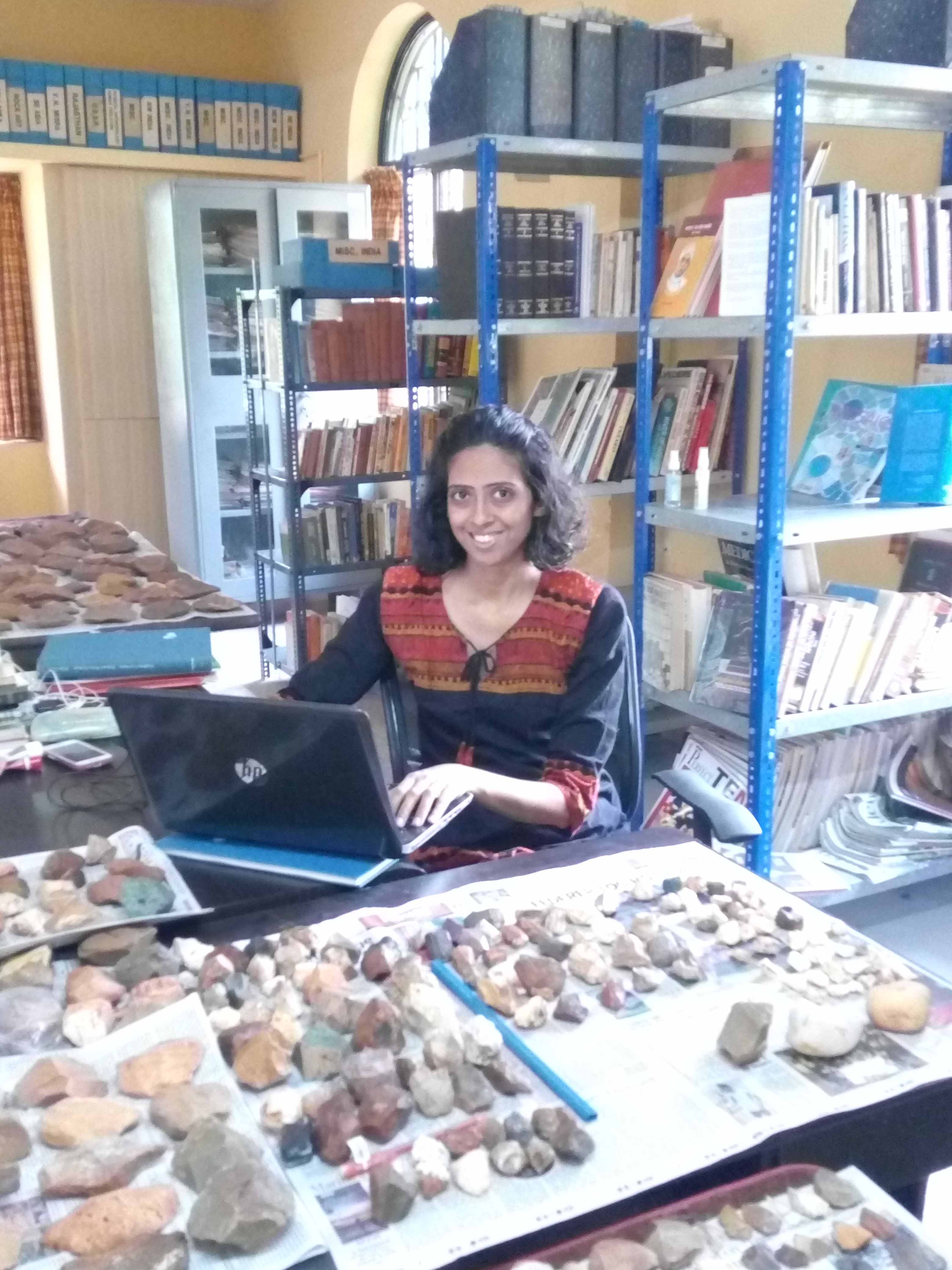 Dr. Prachi B. Joshi, Research Intern, Sharma Centre for Heritage Education, India, Organising Committee Member, will be coordinating the sessions.
Dr. Prachi B. Joshi, Research Intern, Sharma Centre for Heritage Education, India, Organising Committee Member, will be coordinating the sessions.
Organising Committee Member
Dr. Prachi Joshi, is an Indian archaeologist, who is currently working on the Palaeolithic hominin behaviour in the Middle Wainganga basin, Central India. She has completed her doctoral degree from Deccan College, Pune, India, under the guidance of Prof. Shanti Pappu and Dr. S. B. Ota. Her research, in particular, is focused on the behavioural implications of the distribution of Palaeolithic sites and the technological strategies noted during the Acheulian and the Late Palaeolithic phase. She had completed her fieldwork under the guidance of Prof. S.N. Rajaguru. She was awarded A Junior Research Fellowship of Indian Council of Historical Research (ICHR) and Nehru Small Research Grant for her PhD research. In addition to field and laboratory studies, she also participated in numerous conferences (national and international) and published two articles in the international journal Antiquity. She has participated in various workshops which are related to her research and they have improved her knowledge of the subject. She had participated in the excavations at important Palaeolithic sites such as Sendrayanpalayam in Tamil Nadu and Dhansi in Madhya Pradesh. She has also worked on Animal Bone Microstructure from Archaeological sites under the guidance of Prof. Vijay Sathe. Her research interests are in the Palaeolithic hominin behaviour, quaternary sciences and geo-mythology.


